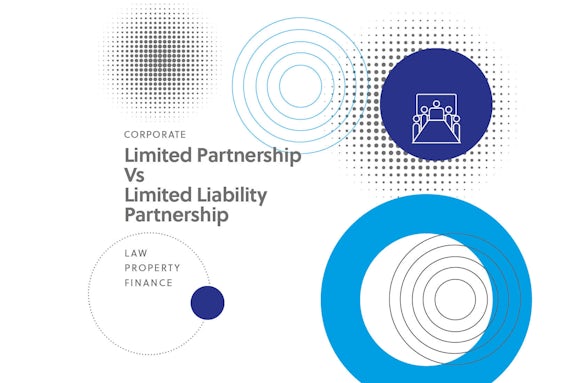Not to be confused with the Limited Liability Partnership; a Limited Partnership (LP) is a form of business set up by at least two individuals. The key characteristic of an LP is the type of partners that form the partnership. In order to function as an LP, there must be two types of partners:
- General Partner; this partner will be liable to creditors with both their business and personal assets. Both a natural person and a legal entity can enter a limited partnership as a general partner.
- Limited Partner; this partner shall not be liable for any debts or obligations of the firm beyond the amount contributed.
Advantages of a Limited Partnership
Limited Partner has limited liability
One of the major advantages of running a limited partnership business is the sharing of responsibility among partners. Also, limited partners are not personally liable for the debts that the business runs into. They cannot be held liable beyond the amount they contribute to the business. This reduces the risk of putting personal assets in the line for repaying debts and obligations.
Shared responsibility of work
A major facet of the partnership model is the ability to share the workload. Different partners will bring different expertise to the table. The benefits of this are key to the operation of the partnership. For example, each partner would be responsible for areas of their own expertise; allowing them to strategically advance the business position in those areas.
The outcome of combining the work of each partner can be a complete and detailed entity that is highly effective. Apart from the workload, the decision-making for companies also rests on the partners equally. This reduces the responsibility on any individual while maintaining a smooth workflow.
Disadvantages of Limited Partnership
Breach in the partnership agreement
An LP should be set up with a partnership agreement detailing how the business is run; how decisions are taken; and more generally how the partners must interact with each other. Partners may disagree on a number of decisions to be taken. A partner may breach the agreement to further their own agenda. This creates pressure on the entire organisation which may lead to the dissolving of the business altogether.
The General Partners liability
As previously stated, the general partner is personally liable for the debts of the partnership. In the event the business goes bankrupt, is sued or faces mounting debts the general partner is at maximum risk since they do not have limited liability. This puts the general partner in a much less advantageous position.
Limited Partners decision making power
As limited partners have limited liability, their role in running the company is limited. Even though the limited partners exercise a fair share of power in the business, they do not have complete say in business decisions. This may lead to tension in the running and management of the business which puts the partnership as a whole in danger.
In order to regulate this, a formal partnership agreement should be put in place. This could provide processes for when situations such as these arise.
Limited Liability Partnerships
A Limited Liability Partnership (LLP) is a legal business structure which allows individuals to conduct business activities with others as partners. This type of structure is often found in professional services firms such as solicitors and accountants. Similar to the limited company, the LLP has its own legal personality that is separate from the partners. The LLP can: own right, property or enter into contracts as its own entity.
Advantages of an LLP
Limited liability
Partners of an LLP hold similar advantage as shareholders of limited companies in that they benefit from limited liability. The context differs slightly in that the liability of members of a company is limited to the nominal value of their shares, whereas the liability of the partners of an LLP is as agreed between them in the partnership agreement.
This means that the partners are not responsible for the debts and liabilities of the business.
Distribution of profits
An LLP does not have any restrictions on how it distributes profits to partners. In order to distribute cash, the LLP may: distribute profits; make loans; and distribute cash.
Flexibility
The internal structure and operation of the LLP is completely flexible. This is particularly important in professional services firms. For example, a firm may wish to appoint different levels of partner that have different rights in the decision making of the business dependent on their status in the business. By adopting an LLP structure, they are free to do so.
Similarly, the nature of the LLP allows partners to be appointed and leave with no capital changing hands and no tax implications despite entitlement to profit share. By the nature of the professional services sector; this may make sense for your business. In law firms partners can come and go without the need to sell shares to effect the transfer.
Additionally, there are no requirements for board or general meetings or decision making. These may be governed by a partnership agreement but there is no requirement to do so.
Disadvantages of an LLP
Member Requirement
An LLP can only operate with two or more members. This means that when you get into an LLP with one or more people, you must ensure that they have no intention of leaving the partnership. In the event the individual were to leave the LLP, it could mean a dissolution of the company altogether.
Investment Problems
Limited companies are often viewed as more attractive than LLPs from an investment perspective. Potential investors are unable to purchase shares in an LLP like they can in a limited company. An investor in an LLP would have to become a member. From an exit perspective, there are no shares to be sold as part of an LLP; this makes profiting from an LLP investment considerably more challenging. As a result, investors may be put off by an LLP structure.
Conclusion
This guide is illustrative of the various advantages and disadvantages of the LP and the LLP against each other and other business structures. Should you or your business need any advice regarding how best to incorporate or otherwise, please do not hesitate to contact the Corporate team at Gilson Gray.
If you would like further information regarding the topics discussed in this blog, please contact:
Joanna Millar by email: jmillar@gilsongray.co.uk or by phone: 0141 370 8116/ 07747 653 417.
Oliver Craig by email: ocraig@gilsongray.co.uk or by phone: 0141 286 2017 / 0131 516 5354







